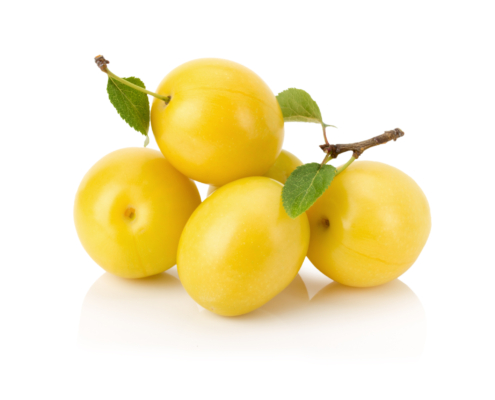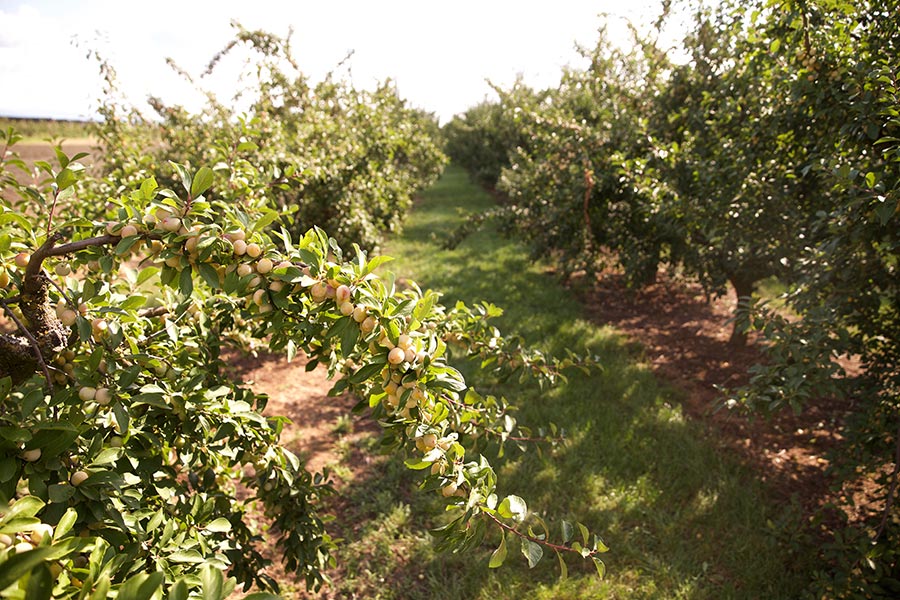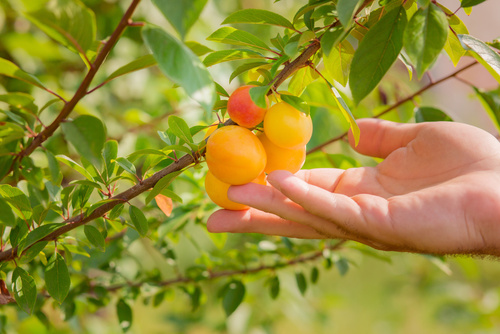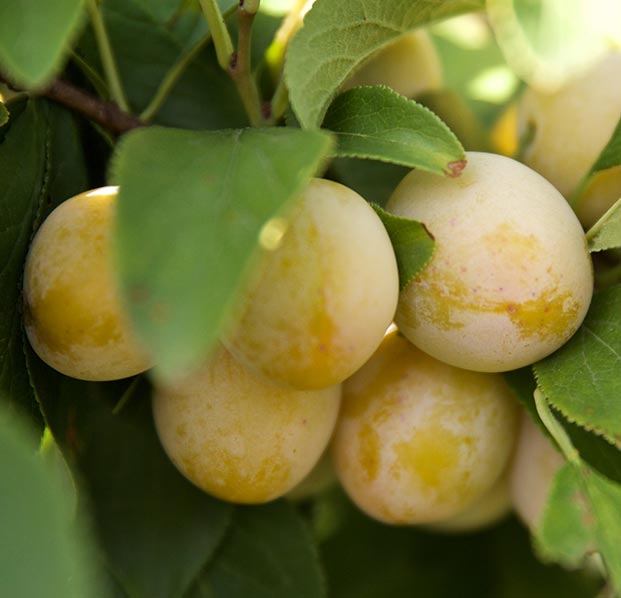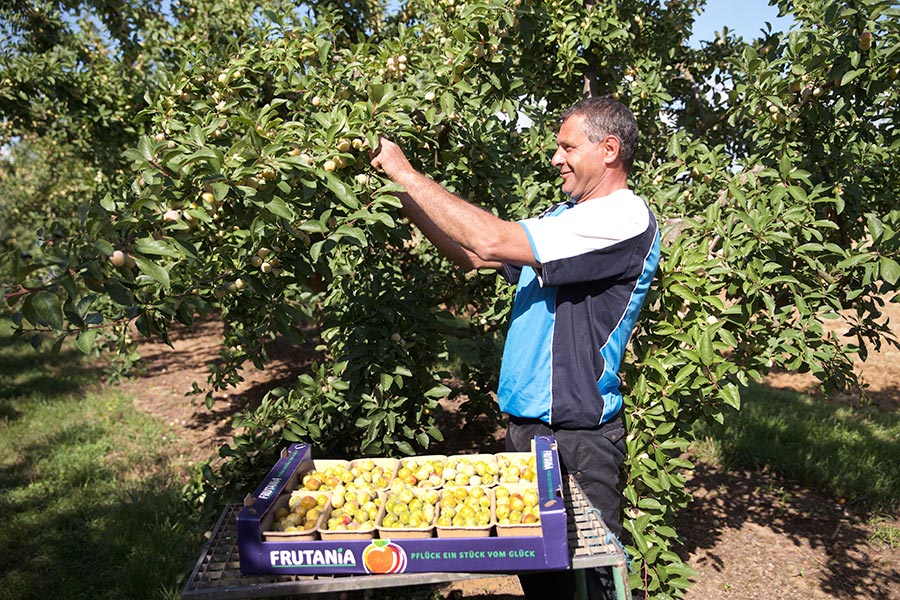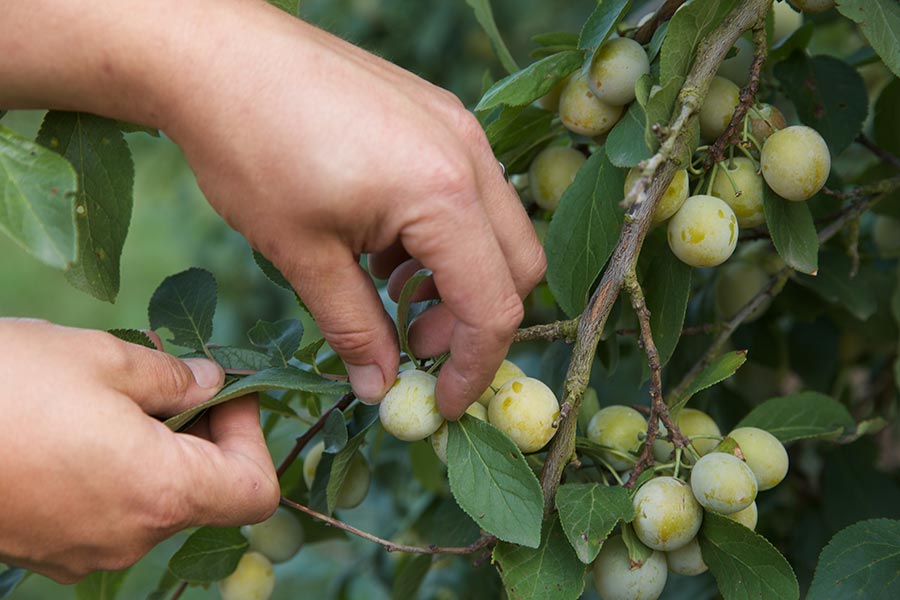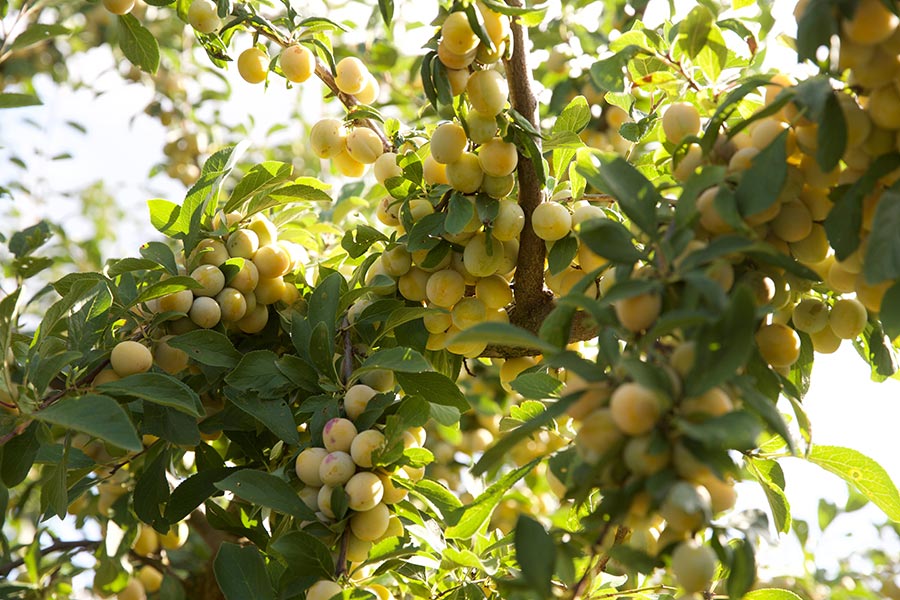Our mirabelles
Our mirabelles are small, spherical fruits, waxy yellow with red stippling or cheek, firm outside, soft inside with golden yellow flesh, sweet and highly aromatic – a true happiness!
Stefan Schneider, one of our growers for mirabelles:
“Working in nature and being able to inspire and pass on my passion for fruit to consumers.”
Schneider’s fruit farm is operated in the 3rd generation. The farm has evolved from traditional agriculture, livestock and apple growing into a pure fruit farm. The farm is located in the Drachenfelser Ländchen, which is situated between the Rhine and the Eifeland and forms the easternmost part of the “Naturpark Rheinland”. The conditions are ideal for fruit growing, as valuable biotopes with a high biodiversity, good soils and mild climate have formed in the former quarries. It is produced according to the principle of controlled integrated cultivation, thus using beneficial insects to avoid the use of pesticides.
Cultivation methods
Mirabelle plum trees form a permanent crop and require a humus-rich, calcareous soil with sufficient moisture. They like mild, wind-protected locations and are self-fruitful.
Picking
Mirabelles are picked by hand with stalk in boxes or buckets.
Quality feature
A special quality feature of plums and damsons is the so-called fragrant film. It protects the fruit from moisture loss. This natural wax layer should therefore be washed off just before consumption or further processing.
Maturity levels
Mirabelles ripen at the same time and are therefore harvested once and completely.
Our varieties
Mirabelles from Frutania
The season lasts from August until the beginning of October.
We offer a very long natural growing season and only fresh produce.
Consumer tips
Purchasing
Fresh mirabelles should have a flawless skin and be nice and plump.
Storage
Mirabelles are very delicate and should be consumed two to three days after purchase. If you get hold of the rather rare, sweet little fruits, you can freeze them without any problems: Wash them, put them in bags with or without stones, seal them tightly and consume them within a year.
Preparation
Mirabelles are already a pleasure pure, which of course can be increased! Simply delicious taste especially compote, juice or jam from mirabelles. The noble relatives of the plum are also perfect for fruit salads or as a fruity-aromatic topping for cakes and pies. The French conjure up sophisticated desserts from mirabelles.
The mirabelle
Small encyclopedia
In France, the mirabelle plum has been loved for about 600 years, while in our country it has only been native for about 300 years. The mirabelle plum belongs to the more than 2,000 different plum varieties worldwide and is the smallest and finest relative from the family.
Depending on the variety and ripeness, the green-yellow to golden-yellow flesh of the mirabelle plum is particularly juicy and is therefore especially popular in France for compotes, jams, cake toppings and as a basis for fine fruit brandy.


